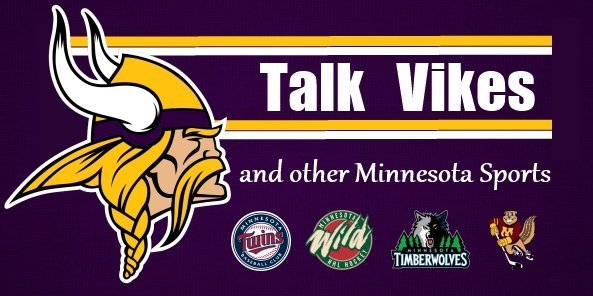DavidAOlson
Posts: 22149
Joined: 8/2/2007
Status: online

|
quote:
ORIGINAL: TJSweens
quote:
ORIGINAL: DavidAOlson
Reach is not defined by need. Reach almost always happens when a team drafts for need. Arguably the greatest draft pick ever made by the Vikings was when they chose a "risky" BPA over need. And some of their biggest screwups were drafting need over many obvious BetterPlayersAvailable.
When Dallas drafted at 12 the #31 player on the board, they burned the equivalent of a late first round pick. That's a huge cost. They should have traded down, if at all possible. Three similarly ranked guards on the board? Low risk.
When Seattle drafted at 18 the #33 player, they burned the equivalent of a second round pick. Could they have moved down a few slots without too much risk?
When the Vikes drafted at 24 the #36 player, they burned the equivalent of a third round pick. But they needed a starting guard. Had to do it, and clearly it was worth it. They didn't have any other guard options if they traded down.
If you want to argue that Jackson is not a reach (he is on almost all draft boards), the best argument I know is that the draftniks are undervaluing guards. And since the guards went so quickly, you could argue that teams are valuing guards more highly, and the draftnik value model is lagging. As further support, I think teams have started spending more on guards, which is a sign that guard valuation has increased.
[#1] If you're going go strictly by where someone is rated on a draftnick's board compared to where they were actually drafted...sure.
[#2] I think there is a lot more to calling someone a reach than that. Take the guards. The so called experts rated them 31, 33 and 36. What's the actual difference between 31 and 36? How were those rankings derived? Zabel is a lot of projection since he played the weakest competition. Jackson played against the strongest competition, but abruptly shifted to LT for the last 9 games. Finally the draft gurus ratings don't necessarily mesh with how the teams rank these guys.
[#3] At the end day, in this draft, Jackson was probably on par talent wise with the best players available to the Vikings. He was their biggest need fit and possibly wouldn't have lasted past 25. Draft rankings aside, I don't think Jackson meets the reach criteria, but that's just me.
I think we're agreeing on most stuff. Like, I'll stipulate that Jackson would have been gone at 25, and even if he wasn't, the Vikings couldn't risk trading down given their situation. But that also assumes the consensus board was right about the remaining draftable guards, which I accept, and you perhaps contest (likely not).
As usual on the internet (sorry), I'll focus on where we disagree.
#1 The consensus board currently combines over 100 draft boards, both draftniks & media. Historically, it drafts about as well as NFL teams — despite not having access to medical like Will Johnson and the details about Mike Green. Had you made the critique a decade ago, when I was relying on GBN and a few other boards, your critique would be valid. But now that the process has been validated against multiple drafts, I don't think the critique is compelling. The consensus board is as good as I can get, and it does as well as the actual draft.
#2 The difference between 31 and 36 is about a late4/early5 pick. I already said a 5th round pick was pretty much "whatever," so we agree that difference isn't particularly meaningful. That makes Dallas particularly stupid: they had 3 similarly ranked OG prospect (by consensus board), and they burned 12 on a player ranked as early second. Maybe they think they are waaaaaaay smarter than the consensus board — unlikely. If they were OG or bust in the first round, that's moronic planning for a team drafting at 12. But... Jerry Jones. ¯\_(ツ)_/¯ Seattle hasn't been drafting smart for quite a while.
More #2 And yes, teams rank them differently. So do the various draftniks. For technical reasons, that means the consensus ranking should be based on average slot values, not average rank.
#3 Your definition of "reach" is definitely different than mine, although I'm not sure what it is.
More #3 Based on the consensus board, both S Starks and LB Campbell were markedly better prospects, by about a second round pick. (FWIW, although Baltimore and Philly make mistakes — Jefferson, they tend to draft quite well, as measured by the consensus board). If the Vikings didn't have such a glaring positional hole at OG, they could have considered grabbing that extra value. Also OT Simmons was very good value for KC, but barring injury the Vikes are set at OT for a few years.
But again, the Vikes off-season plan seems to have been to leave a hole at OG, fill it in round 1, which they (barely) managed to do. Was it a good idea? You'd have to weigh the lost draft value against spending more on Center and Guard. But at this point, yeah, they successfully accomplished their major off-season roster plans.
But compared to Dallas and Seattle? Hell yeah. Much better.
< Message edited by DavidAOlson -- 4/25/2025 1:59:29 PM >
_____________________________
I give myself very good advice, but I very seldom follow it. --- Alice
Leviticus 19:34
|

 Printable Version
Printable Version












 New Messages
New Messages No New Messages
No New Messages Hot Topic w/ New Messages
Hot Topic w/ New Messages Hot Topic w/o New Messages
Hot Topic w/o New Messages Locked w/ New Messages
Locked w/ New Messages Locked w/o New Messages
Locked w/o New Messages Post New Thread
Post New Thread